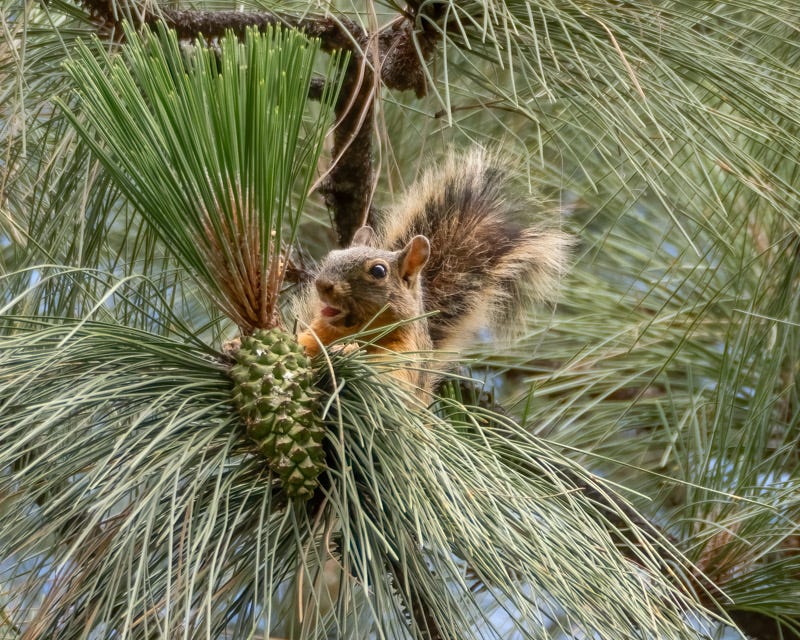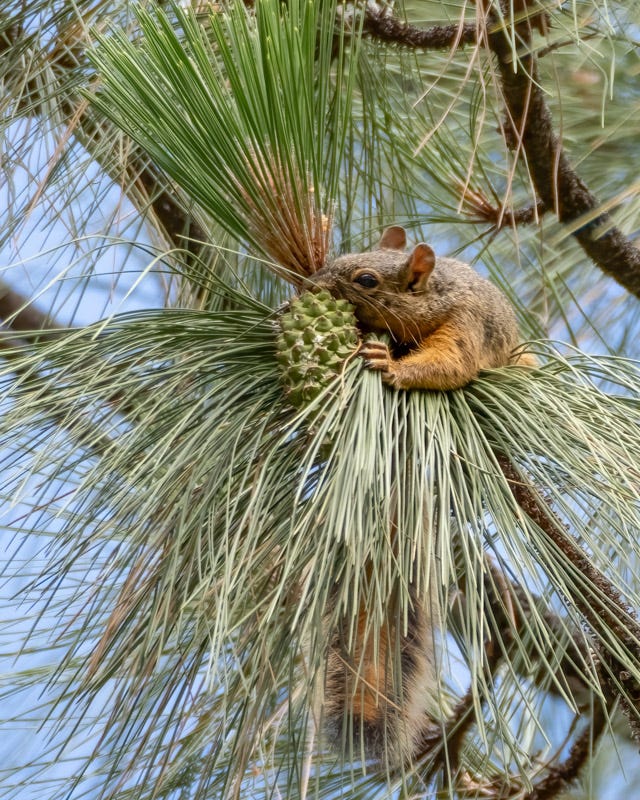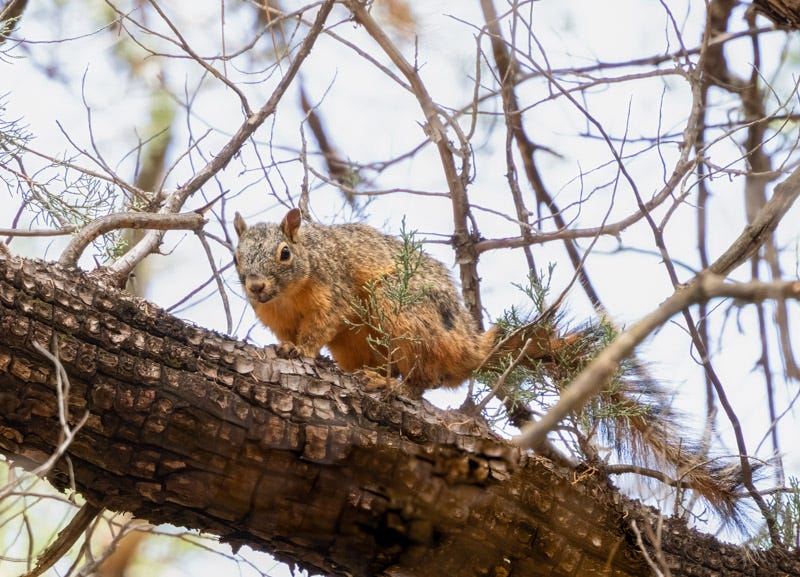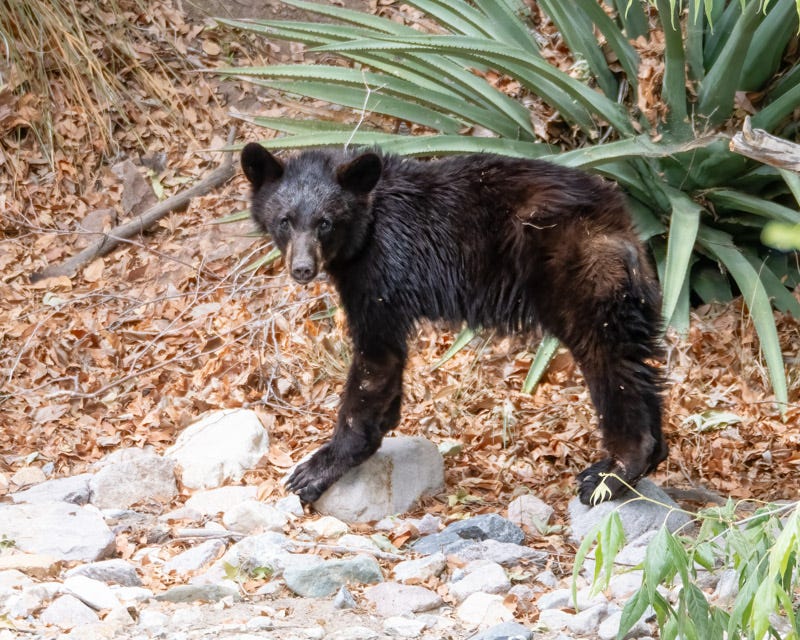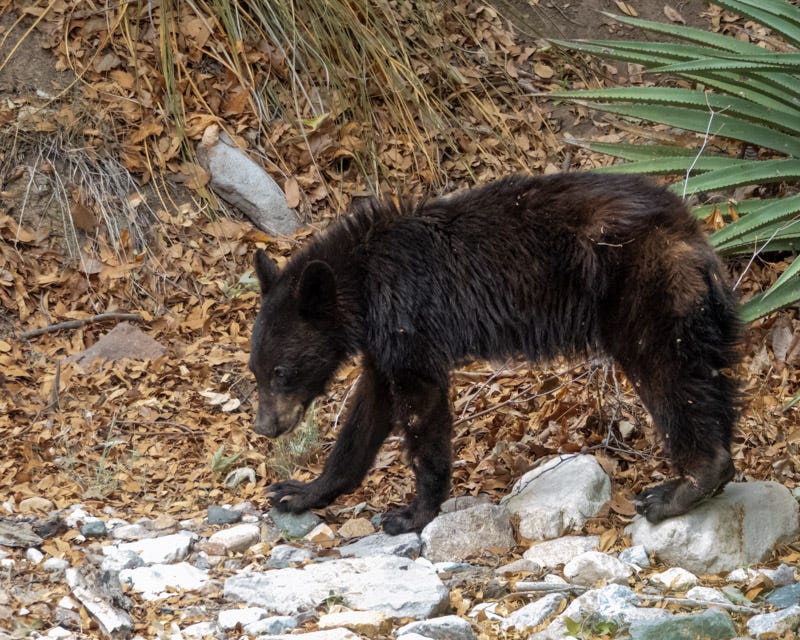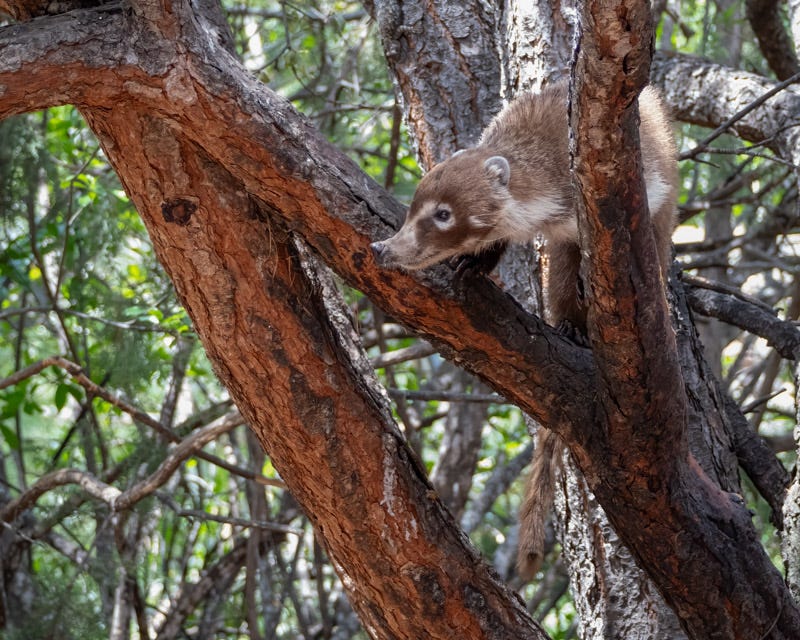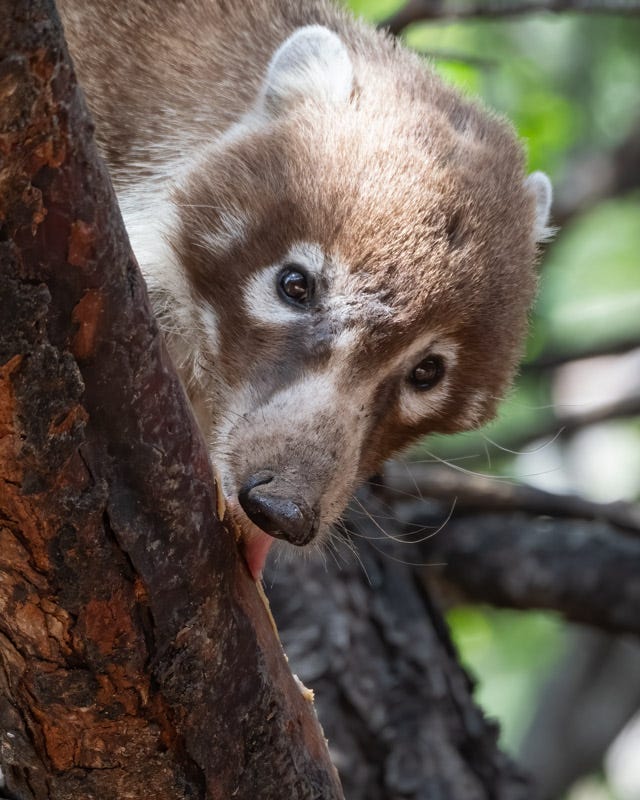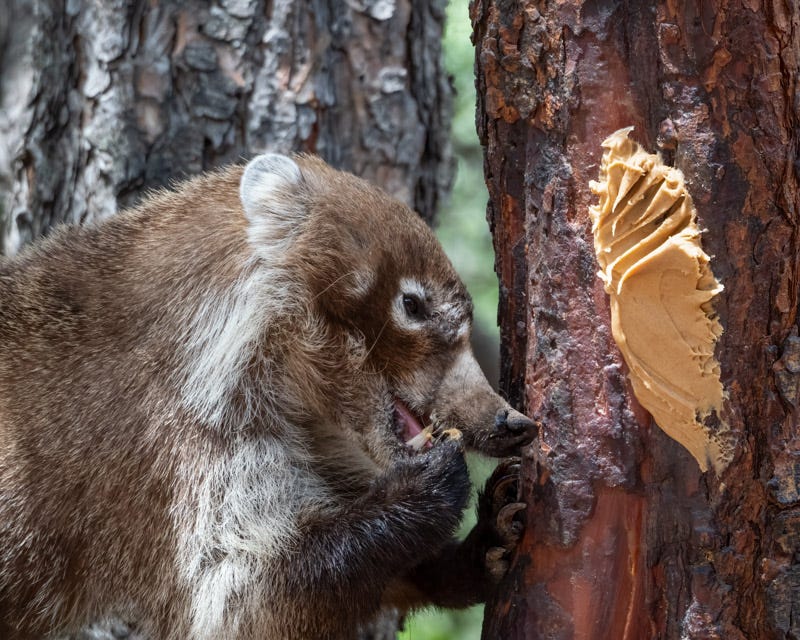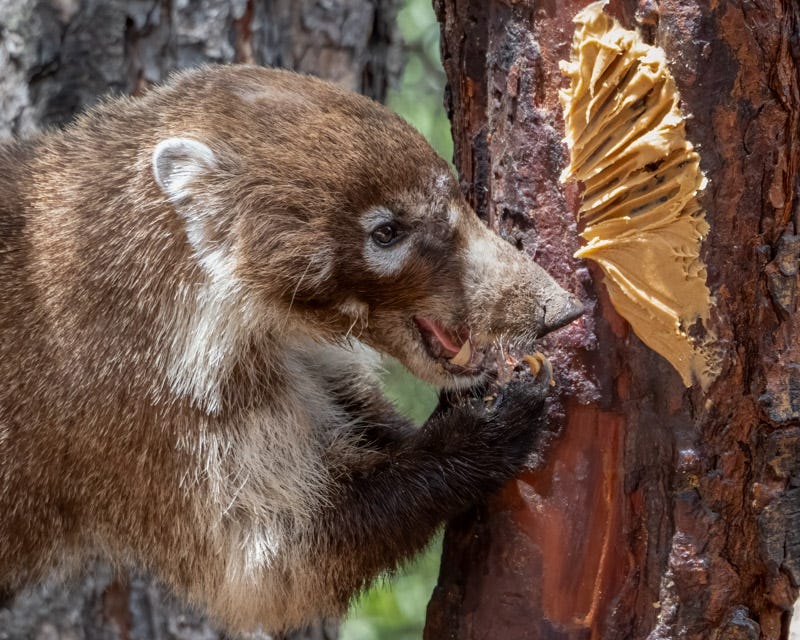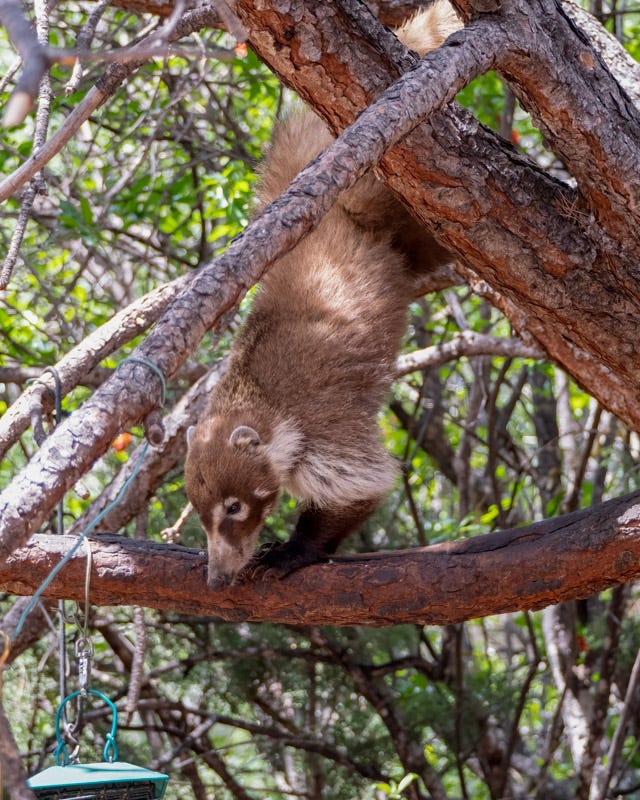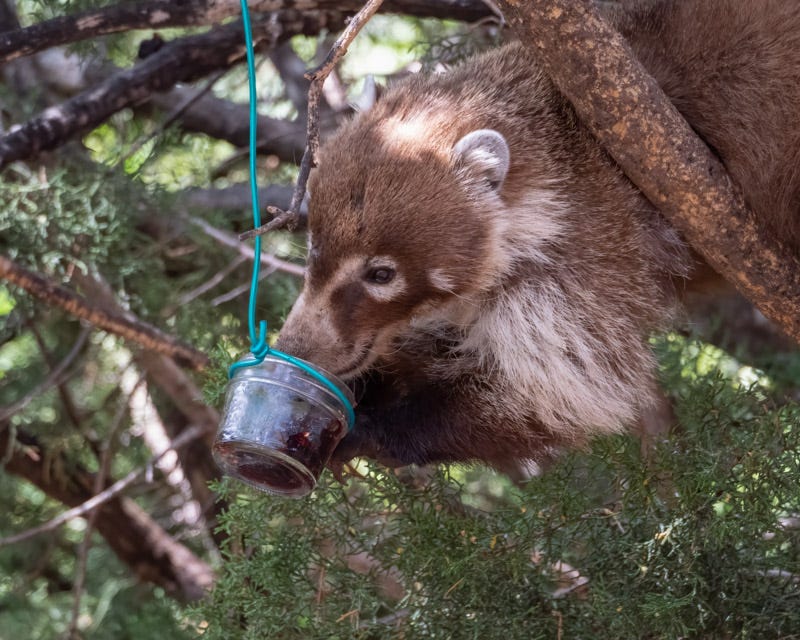Some Mammals of the Chiricahuas
A squirrel, a bear and a coati
We were walking along the South Fork road when we noticed pine needles and debris dropping from a tree. Looking up, we found a Mexican Fox Squirrel eating seeds from a pine cone. At one point the squirrel dropped the mostly eaten cone and scampered across the tree to find a fresh cone.
He worked quickly to remove the new cone from the branch. Mexican Fox Squirrels are a tree squirrel species that is present in the western Sierra Madre Mountains of Mexico. It is only present in the United States in the Chiricahua Mountains, and is sometimes referred to as the Chiricahua Fox Squirrel: https://www.arizonahighways.com/classroom/chiricahua-fox-squirrels
The squirrel finally got its new cone loose and scampered off. Later that day, about a quarter of a mile up the road, we came across another Fox Squirrel. You can really see how orange/red its belly is.
White-tailed deer are a very common mammal in the Chiricahuas. They seemed to be everywhere every day, but I didn't even try to take one photo. The timing was not right or I was in the car driving past them on the way to one spot or another. But, on the last day of our trip at our last stop in a place coincidentally called "Whitetail" Canyon, just ten minutes before we left, a Black Bear walked out from the brush and into the creek bed, not 30 yards from where we were eating lunch.
The Black Bear seemed to be a yearling, just one year old. It stood still for a while, seeming to try to decide what to do. After a few minutes, it turned and moseyed up the hill across the creek from us.
We had a very close and long look at yet another mammal common to the Chiricahuas- a White-nosed Coatimundi. We spent some time at the feeders at the Cave Creek Ranch. The coati is a regular visitor there, and even with our close proximity, it didn't seem bothered. It came for the jelly and the peanut butter.
Besides putting out bird seed, suet cakes, and jelly feeders, many people in bird-rich areas also put peanut butter out for the birds. Feeder birds are attracted to the protein in peanut butter. Needless to say, the Coati is also attracted to peanut butter.and will lick it straight off of the tree it has been smeared on. https://www.desertmuseum.org/books/nhsd_procyonids.php
Coatis are related to Raccoons and ring-tailed cats. They inhabit southern Ariona's mountain canyons with oak and sycamore along with riparian areas in those canyons. Coatis have long claws to dig in the earth for grubs and beetles, and they also eat fruits, nuts, rodents, eggs, etc. You can see the tracks that their claws made in the peanut butter. You can also see one sharp tooth of the Coati.
The Coati spent quite a while stuffing himself with peanut butter. For more on this fascinating mammal, see https://azstateparks.com/coatimundi
After consuming a good deal of peanut butter, the Coati moved back in the tree looking for other food.
When it had enough of the peanut butter, it headed back to the jelly. Nothing like a peanut butter and jelly lunch on a hot summer day.
Each of these three mammals have found the Chiricahuas a good place to live. We were lucky to get glimpses of these wild creatures.


